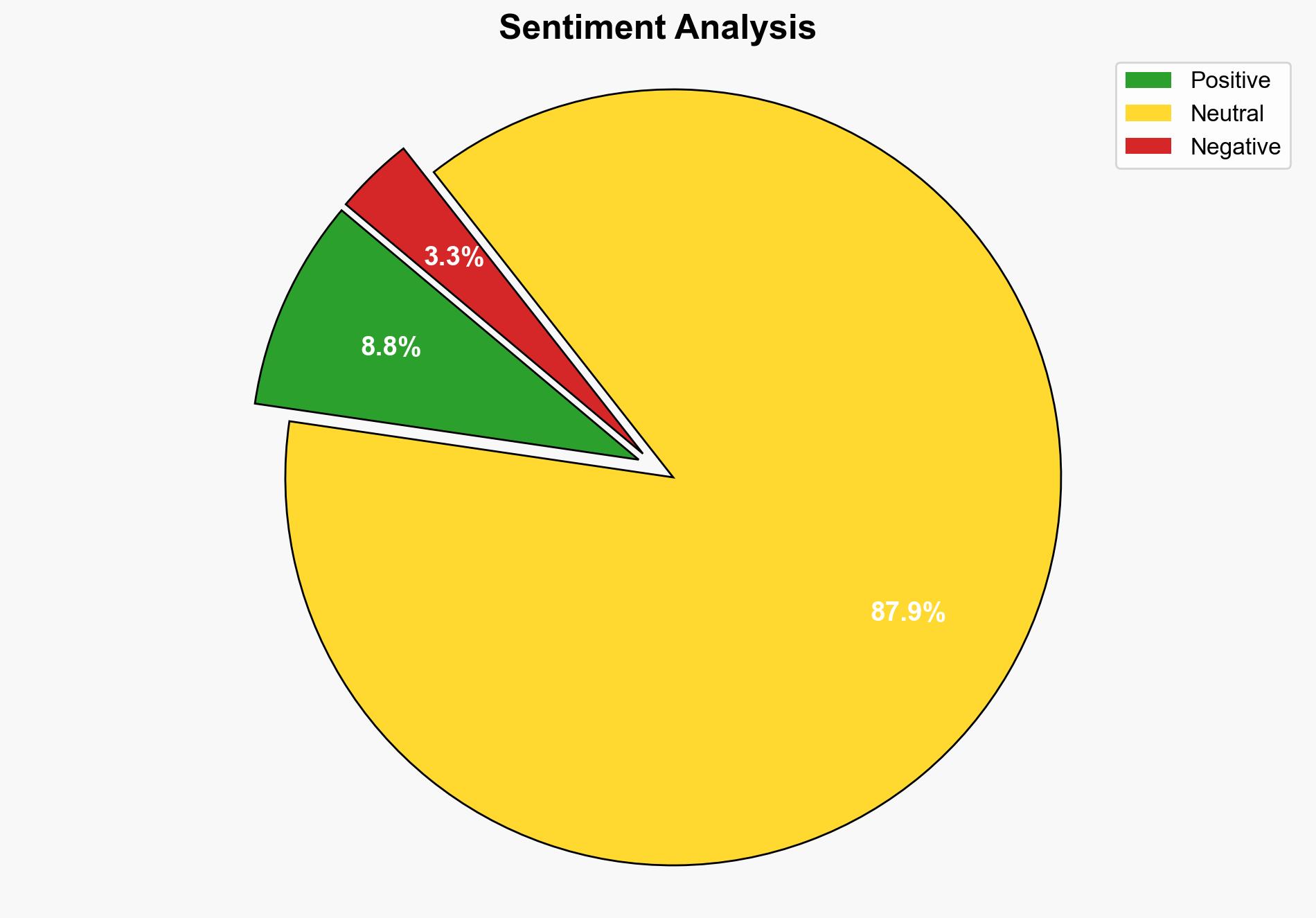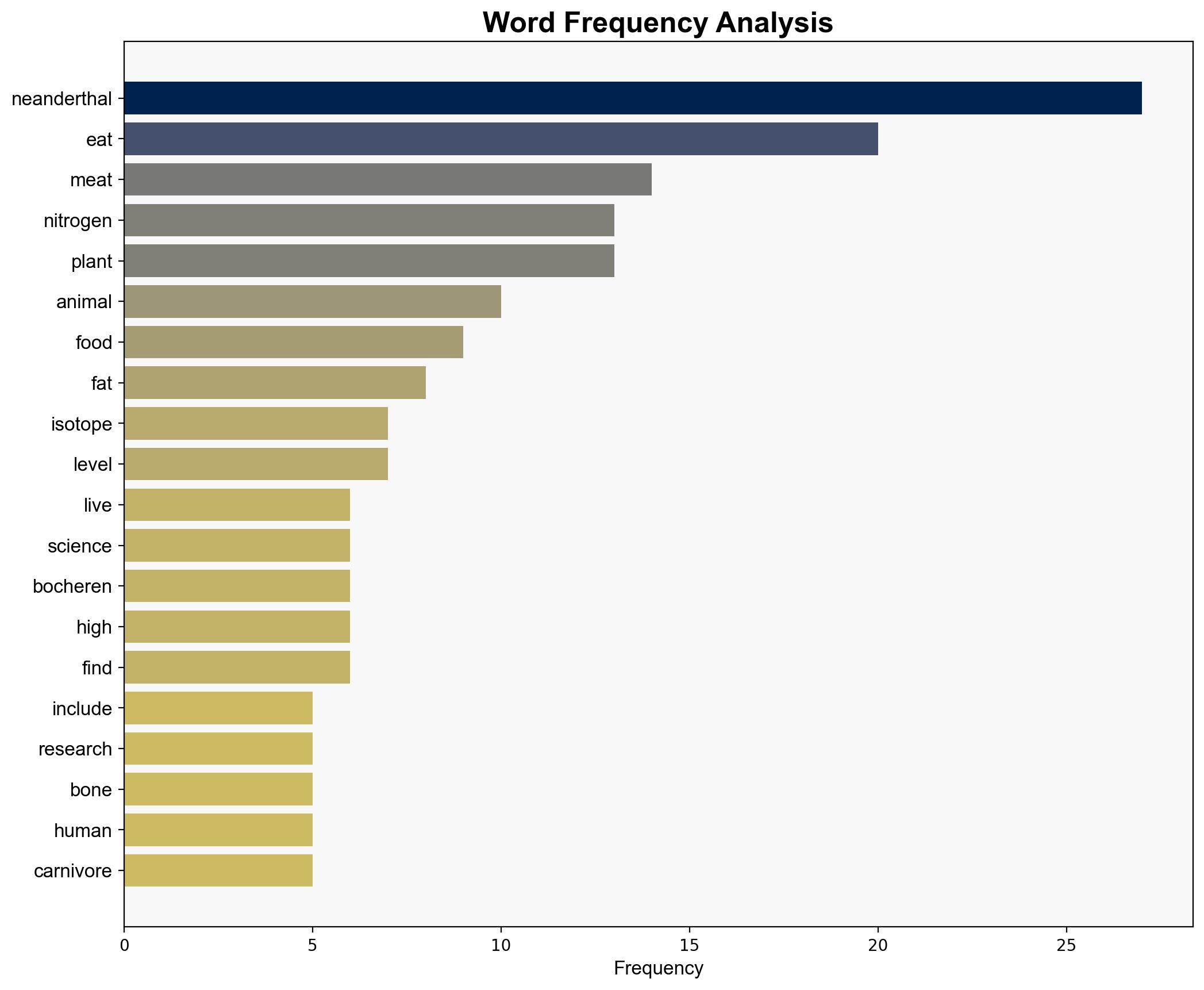Did Neanderthals eat anything other than meat – Live Science
Published on: 2025-10-26
Intelligence Report: Did Neanderthals eat anything other than meat – Live Science
1. BLUF (Bottom Line Up Front)
The analysis suggests that Neanderthals primarily consumed a meat-based diet, with some evidence indicating the inclusion of plant materials. The most supported hypothesis is that Neanderthals were hypercarnivores, relying heavily on meat and bone marrow, with occasional consumption of plant matter. Confidence level is moderate due to potential biases in isotopic analysis and the limited scope of archaeological evidence. Further interdisciplinary research is recommended to explore dietary variations across different Neanderthal populations.
2. Competing Hypotheses
1. **Hypothesis A:** Neanderthals were hypercarnivores, primarily consuming meat and bone marrow, with little to no plant intake. This is supported by isotopic evidence showing high nitrogen levels consistent with large carnivores.
2. **Hypothesis B:** Neanderthals had a more varied diet that included significant plant consumption, alongside meat. This is suggested by the presence of plant isotopes and the hypothesis that Neanderthals consumed the stomach contents of herbivorous prey.
3. Key Assumptions and Red Flags
– **Assumptions:** The isotopic analysis accurately reflects the diet of Neanderthals without significant contamination or misinterpretation. The presence of high nitrogen levels is assumed to be solely due to meat consumption.
– **Red Flags:** Potential bias in interpreting isotopic data, as it may not account for all dietary sources. Limited archaeological evidence may not represent the full dietary spectrum of Neanderthals across different regions and time periods.
4. Implications and Strategic Risks
Understanding Neanderthal diet has implications for reconstructing human evolutionary history and adaptability. Misinterpretations could skew perceptions of Neanderthal extinction factors and their ecological roles. This knowledge also impacts theories on human dietary evolution and adaptability to environmental changes.
5. Recommendations and Outlook
- Encourage interdisciplinary research combining isotopic analysis with archaeological and paleoenvironmental data to gain a comprehensive understanding of Neanderthal diets.
- Scenario-based projections:
- **Best Case:** New evidence confirms a varied diet, enhancing understanding of Neanderthal adaptability.
- **Worst Case:** Continued reliance on isotopic data leads to misinterpretation of Neanderthal dietary practices.
- **Most Likely:** Further studies reveal regional dietary variations among Neanderthal populations.
6. Key Individuals and Entities
– Ludovic Slimak
– Hervé Bocherens
– April Nowell
– Chris Stringer
7. Thematic Tags
human evolution, paleoanthropology, dietary analysis, archaeological research




